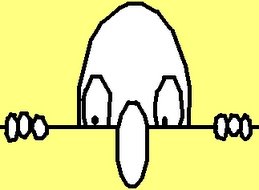I admit that I am not a great fan of the 20th
Century American novel, though it turns out in retrospect that my educational exposure to
Steinbeck included The Pearl, Of Mice and Men, The Grapes of Wrath, and Cannery
Row. In more recent years I have come to
appreciate his non-fiction work and especially his journalistic reports during
World War Two, collected in Once There Was a War.
This Penguin Twentieth-Century Classics edition of John
Steinbeck’s World War Two resistance novel includes a very informative 18 page
introduction by Donald V. Coers, Professor of English and scholar of
Steinbeck’s body of work. Also included
are more than three pages of suggested further reading.
This introduction recounts how Steinbeck worked with the
U.S. Office of Coordinator of Information and “Wild” Bill Donovan’s Office of
Strategic Services (OSS) to support the Allied war effort. Steinbeck’s work in that regard brought him
into contact with displaced citizens and refugees from a number of European
nations then under Nazi occupation.
In late 1941, Steinbeck conceived the idea for a short novel
about the experience of being invaded and occupied. Reworking a first draft that was set in
America, he published this final version as The Moon is Down in March, 1942. It was soon staged on Broadway and in 1943 a
film version premiered. Critical
reaction was varied and often quite strongly negative. However, according to Professor Coer’s
account, this short novel was well received in the afore-mentioned communities
of wartime exiles. Their positive
response led to the text being smuggled into Occupied Europe. In Norway, Denmark, the Netherlands, France,
and eventually China, clandestinely translated, printed or mimeographed
editions were distributed by underground resistance organizations and became a
strong element in pro-Allied propaganda campaigns. Nazi occupation forces banned the book (even
in Germany) but copies were actually for sale in several countries as a
fund-raising effort by the resistance.
The story itself is told simply in neat, clean prose. The events of invasion, occupation, etc., are
narrated without benefit of Hollywood style drama. Neither the occupied nor the occupiers are
ever identified by nationality or geographic location. The action is set almost entirely in and
around a small simple town, with the sea on one side and farmland surrounding
it on land. The reader is introduced by
name to the individual citizens and soldiers interacting in this small drama,
but we are offered no information about the larger world and larger war beyond
the victory of the occupiers. The story
is thus embodied at a very personal scale as each individual is presented with
choices and makes decisions about how to react in this new situation.
I think Steinbeck’s choices in this work explain why it had
such a popular response in so many different occupied countries. It is a story in many ways still relevant
today in a world still marred by armed violence that crosses borders and
reaches even into peoples’ homes.

